Trader Joe’s Salad with BBQ Flavored Chicken
Posted: September 26, 2013 Filed under: Chicken, Salad, Trader Joe's Brand | Tags: bbq chicken, bbq chicken salad 4 CommentsToday we have yet another entry in TJ’s seeming endless parade of salads. Unfortunately, Trader Joe’s Salad with BBQ Flavored Chicken is a pale imitation and poor match for the much more delicious MexiCali salad or, well, most of the salads I’ve tried from TJ’s.
TJ’s BBQ chicken Salad commits one of the great crimes of food – being bland. The salad is basically fine – it’s not unpalatable or gross or particularly unpleasant at all really – it’s simply mute, a more or less flavorless meal. This would have been less of a surprise if I this salad was all boiled watercress or something, but were talking about what sounds like a knock-out line up of ingredients. Lettuce, black beans, corn, minced red pepper, tortilla strips and smoked Gouda cheese. The smoked Gouda I’m not going to say a word against – it’s delicious burst of flavor in an otherwise uninteresting salad. Instead, let’s take a look at the BBQ flavored chicken itself. Sounds good, right? Or does it?
I suppose the “flavored” line in the title should have tipped me off. When people start tossing in qualifiers like “flavored”, as in “grape juice flavored beverage drink”, you know you’re going to be getting some sub-par cuisine. That’s what we’re getting here. This isn’t barbecue chicken, or chicken with barbecue sauce, its barbecue-flavored chicken, meaning, I suppose, that instead of actually cooking the chicken up like someone who cares, you sort of mist the chicken with a barbecue solution while it runs by on a conveyor belt. Whatever the method, the chicken holds only a weak bbq sauce taste that vanishes under the stronger lettuce and corn flavors.
Hand in hand with the bland bbq chicken, goes the bland BBQ Vinaigrette. We’ve already looked, very briefly, at the proud tradition of vinegar-based BBQ sauces native to the Carolinas. This is not they. The included BBQ vinaigrette tastes like a weak, watered down BBQ sauce that does no favor for the vegetable medley. If you cut this out and substituted it with a more robust, flavorful sauce, maybe a blue cheese of some sort, you might have a salad worth recommending. That’s probably more effort that it’s worth however.
Overall, this salad manages to be less than the sum of its parts. It’s not the worst salad in the world, but it really has nothing to recommend it either. When you’ve got panoply of truly great salads just waiting for you in the produce aisle, it’s hard to imagine why you’d ever go for this guy.
The Breakdown:
Would I Recommend It: No, try the Mexicali salad instead.
Would I Buy It Again: Maybe ironically.
Final Synopsis: A salad as bland as it is poorly named.
Trader Joe’s Pure Coconut Water
Posted: September 24, 2013 Filed under: Coconut, Drinks, Trader Joe's Brand | Tags: coconut water 6 CommentsI don’t like coconut water. I’m officially on the books as one of those guys who walks around with a half-quizzical, half-angry look on his face, loudly complaining to his friends about how stupid it is that coconut water is being sold everywhere all of the sudden. Granted, I formed my opinion after trying maybe two different types of coconut water (Zico, and something else – something stupid) but that was enough for me. To hell with coconut water! It tastes weird and kind of gross, it routinely costs four bucks a bottle, it’s been co-opted by the uber-trendy – what more reason did I need to forsake it forever?
Forsake it I did until, in a moment of sheer caprice, I picked up Trader Joe’s Coconut Water. now sold in convenient giant box form. Instead of taking it home, trying a warm sip in my kitchen then writing a pissy article about it with one hand while pouring it down the drain with the other, I thought I’d actually give it a fair shake, take this one out into the real world, and field test it.
The one thing that coconut water gains the most acclaim for, and cornerstone to it’s marketing spiels, is how incredibly hydrating it’s alleged to be. Seeing as that all of my encounters with coconut water have been in the comfort of my own kitchen while at 90% hydration, I’m willing to grant that I haven’t really given coconut water a fair shot. What if I was super in to yoga, like the girls in all the coconut water ads? What if I was all sweaty and tired from yoga? Would I have a totally different opinion of this otherwise lame drink?
I executed my plan on one of the 90+ degree Saturday’s Los Angeles has been inflicting on us throughout late summer. I left home with two bottles, a liter of Trader Joe’s Electrolyte Enhanced Water (not reviewed on this blog because, come on, it’s basically just water), and the unwieldy, soft-sided 750 ml box of Trader Joe’s Coconut Water.
The plan,such as it was, was to walk down to a local park, goof around and play Frisbee with friends, and self-hydrate as necessary. I ran into trouble immediately out the door. While attempting to apply sunscreen to my head and walk at the same time, I managed to apply 100 times the required amount of lotion. Operating off of, what I know recognize as deeply flawed logic, I attempted to massage the pool of sunscreen into my scalp. This did not work out well, resulting in a dense mat of oily, greasy hair. While this did provide an all but impenetrable barrier to ultraviolet radiation, it also prevented normal perspiration. After walking two blocks, giant beads of sweat were already crawling down my forehead. I cracked open the electrolyte enhanced water and began to drink.
Two hours and a bathroom break later, the bottle of water was laying empty next to me. Meanwhile, the stealthy hands of dehydration continued their busy work, pilfering my precious bodily fluids. The time had come for coconut water. I popped open the sun-warmed box and took a drink. Folks, believe me when I tell you that I was instantly quenched in a way the water didn’t even come close too.
The coconut water lit up my whole tongue as it hungrily responded to the vital potassium and trace nutrients it contained. When it splashed down into my stomach, I could actually feel a difference in the level of hydration I was receiving – I could feel the coconut water saturating and infusing my whole body. To put it mildly, I was astonished. I expected the coconut water to be a good source of hydration, in a best case scenario I thought it might be on par with water. I certainly didn’t expect it to completely blow away water. Where the water felt like it was nourishing the top of my tongue, but the coconut water felt like it was hitting every nook and cranny, hydrating me throughout my body. Simply put, it was satisfying in an organic, fulfilling way.
Did it still taste gross and slightly off-putting? Yes, absolutely. But what I’ve come to realize is that coconut water isn’t playing the tasty drink game, it’s playing the hydration game – and in that arena it triumphs.
If you, like me, have avoided coconut water on the grounds that it’s gross and expensive,you’re absolutely validated and may continue to do so. If, however, you’re looking for a healthy, natural and very effective way to rehydrate – Trader Joe’s Pure Coconut Water is an excellent solution.
The Breakdown
Would I Recommend It: Yes, if you plan on sweating; no if you want a tasty drink.
Would I Buy It Again: Yup, I’m a coconut water convert.
Final Synopsis: Coconut water will hydrate the hell out of you.
ACE Hard Pumpkin Cider
Posted: September 19, 2013 Filed under: Alcoholic, Apple, Drinks, Pumpkin, Trader Joe's Brand | Tags: apple cider, Cider, hard cider Leave a comment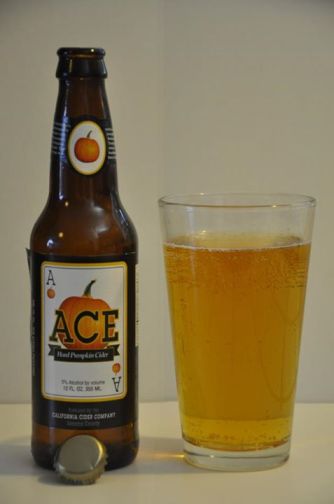
Looks like cider, tastes like pumpkin and a playing card on the label. Ace is sort of mixing its metaphors here.
Every now and then I feel compelled to review a product at Trader Joe’s that isn’t on the actual Trader Joe’s brand. I’ve done it once or twice before, and only if I’m sufficiently intrigued by the weird nature of the product. When I saw ACE Hard Pumpkin Cider in the store the the other day, I simply couldn’t contain my curiosity. I’ve heard of apple ciders before, obviously, and even pear ciders. But pumpkin? That’s just crazy enough to get you on this blog.
A good hard cider isn’t an easy thing to come by in the states. They have a rather more robust history in the old UK and across the continent, but never took off in a big way in America – this despite a strong start in the nation’s infancy. In fact, for a non-trivial portion of America’s history hard cider was drunk like water, literally. In the colonial era, the notion of practical sanitation was a far off dream. As a result of water-borne illnesses, the populous quickly started looking for alternatives to keep them healthy, hydrated and maybe get them a little drunk to boot. The common solution was hard apple cider, which became the most common beverage to drink with meals.
As time went on, of course, public sanitation came into vogue. Water lost its stigma of being unhealthy, and beer rose to the position of most patriotic beverage. Nevertheless, the way was paved for pumpkin cider which, despite my high hopes, is not actually squeezed out of pumpkins in a giant pumpkin press, but made by adding natural flavorings to ordinary hard cider.
How does it taste? Well, a bit like pumpkin, really. The apple juice that makes up the base of this cider is still the primary and unmistakable component of the drink, but ACE doesn’t skimp on the natural pumpkin flavoring either. Crack open the bottle and you’ll get not only a bouquet of pumpkin up your nose right off the bat, but a rich blend of spices that embodies all of late fall. I’ll admit that one of the reasons I bought this drink was because, standing there on the supermarket floor, I couldn’t really conceptualize what pumpkin smelled like and I hungered for the experience. (The other reason, of course, was to give me an excuse to get drunk). The pumpkin you find in this bottle is similar to the pumpkin you find in a good pumpkin pie, not overly sweet but a more basic, essential pumpkin mixed with allspice, cinnamon and cloves. If you can drink this and not be transported back to a childhood memory of crunching leaves underfoot then you are probably dead inside (or grew up in a tropical -to-semi-tropical climate, one of the two).
Speaking of deadening yourself, the cider packs a reasonably strong punch – 5% alcohol by volume. That puts it toe to toe with most beers on the market. The over-sized 22 oz bottle, on the other hand, ensure that once you open this thing up you won’t be going out for the evening.
I’m going to stay out of the cider vs. beer controversy on the grounds that it is stupid. Cider and beer can and should exist happily side by side, although if we’re keeping score ACE’s pumpkin cider is gluten-free and has lower calorie than beers with the same alcohol content.
I haven’t had a hard cider that I’ve ever really liked before, everything I’ve ever tried has seemed too sweet or too cheap, but I liked this cider and I’d go back to it again. That said, pumpkin cider is ultimately a seasonal drink and a novelty. It’s never going to replace beer, or even a hypothetical, good, hard apple cider, but it could absolutely find a place on the counter next to the egg nog.
Breakdown:
Would I Recommend It: If you’re into novel seasonal drinks, absolutely.
Would I Buy It Again: Sure, next fall.
Final Synopsis: A quality cider, with or without the pumpkin gimmick.
Trader Joe’s Onion Dip Mix
Posted: September 17, 2013 Filed under: Dip, Onion, Trader Joe's Brand | Tags: dip mix, onion dip 6 CommentsOnion dip, one of mankind’s most favorite dips. With the exciting arrival of Trader Joe’s Onion Dip Mix, they have now fulfilled the requirement that all supermarkets sell some type of powdered onion dip mix. I picked this up because it was new, and that’s always cool, and because onion dip is one of the most ordinary things you’re ever going to encounter in your life. Powdered onion dip mixes seldom, if ever, vary – presumably it’s all made in the same enormous mixing plant in New Jersey somewhere and then packaged with different labels. Trader Joe’s treads so far from the beaten path, is so devoted to bringing us strange and mysterious things, that it seemed weirdly incongruous that they’d be offering something as mundane and prosaic as onion dip. Surely they’ve got something sneaky planned with their onion dip, some uniquely Trader Joe’s twist hidden in this little orange packet.
Sadly, this is not the case. Trader Joe’s Onion Dip is practically indistinguishable from any other powered onion dip you might have ever had. It’s not a bad onion dip, it’s just a very ordinary onion dip. The sort of onion dip that makes you go, “Yup, here’s some onion dip.” So, in summary – if you are looking for a cheap ($0.99) onion dip mix on par with Knorr or Lipton, here you go.
The deeper, and to me more interesting, question is why do we eat onion dip at all. It’s tasty and I’m glad we do, but who was the first enterprising soul who thought “Know what this sour cream needs? A really strong onion flavor.” That’s really weird, wouldn’t you say? These are not two ingredients that naturally occur near each other in the wild Of course, I’m not Northern European either. Various recipes involving sour cream and onions were floating around the Old Country long before we adapted it into a party appetizer in the states. That transformation took place in the mid-
As it happens, the first onion dip didn’t come about until 1954, and owes its thanks entirely to the wondrous Modern Age. The era of convenience that exploded in America after WWII showed itself nowhere more clearly than through changes in the kitchen. Take the sudden rise of powdered soup, for instance. The idea of dehydrating soup for ease of use is a surprisingly old one. Lewis and Clark packed a great quantity of a commercially produced “pocket soup” with them on their expedition. The very first mentions of such a product can be traced back to as far as England, in the year 1681. These first powdered soups however, were more akin to bouillon cubes, hard lumps to be dissolved over time. These were eventually refined into powdered mixes that could easily be added to water by the busy housewives of the 1940’s and 50’s. It was one of these women, now as forgotten to time as the honorable Governor Ding, who first grabbed a packet of Lipton’s Onion Soup Mix and added it to a bowl of sour cream. The result was a hit, and quickly co-opted by the Lipton company who as early as 1958 started printing it on every packet of onion soup mix they sold.
That, pretty much, is everything you need to know about the history of onion dip. What will the future hold for onion dip? We must wait and see. In the meantime, the next time you need to cater a party on the cheap, or prep a snack for the football game, you can give this dip a whirl
The Breakdown
Would I Recommend It: Eh. It’s as good as any other brand.
Would I Buy It Again: Sure, if I’m having people over or something.
Final Synopsis: A competent onion dip mix with no surprises.
Trader Joe’s Pizza Veggie Burgers
Posted: September 12, 2013 Filed under: Burgers, Pizza, Trader Joe's Brand, Vegetarian | Tags: pizza burger, veggie burger 11 CommentsPizza in a burger, folks. Think about that. Has it really taken us this long to combine two of America’s favorite foods into one delicious food? Isn’t that strange? What’s even stranger is that it took Trader Joe’s Pizza Veggie Burger to do it. I myself am an unrepentant carnivore and steer clear of the veggie burgers unless a particularly whimsical spirit seizes me, nevertheless I am a huge fan of these. Go pizza burgers! Show us the way to a better future!
All the veggie burgers I’ve had in my life to this point have been a disappointment. When you get the hankering for a nice, sloppy burger it’s never satisfying to sit down to a heavily processed mass of tofu studded with whole peas and corn kernels. I always have been disappointed, and I expect I always will be in the future (Trader Joe’s excluded) for the simple reason that veggie burgers are playing a losing game. Vegetables simply cannot replace meat. They are beautiful and wonderful in the own right, but even the absolute best slice of marinated seitan is going to come second to a middling steak. Yet for some reason vegetarian food providers return to the well of ersatz meat products – foisting not just veggie burgers, but tofurky and chik’n and vegetarian bacon and countless other so-called “meat analogs”. It’s this sort of weird fixation on replicating meat that turns so many of the vegetarian-curious away from the shores of meatlessness. Try as you might, a soy protein patty isn’t going to be mistaken for a ground beef patty.
On the other hand, vegetables can do all sorts of excellent things that meat can’t. Where vegetarian cuisine embraces it’s flexible, malleable and adaptable nature it champions greatly. There are a million ways to cook delicious vegetarian meals that don’t resort to imitating meat products – take the world of Indian cuisine for instance. There’s no reason that a veggie burger has to try and force itself to taste like a ground beef burger – by branching out into a world of other interesting tastes, in this case pizza, Trader Joe’s flips the game on its head by setting its own standard of success. It’s not trying to be a regular burger – it’s trying to be a pizza burger, and on those grounds it succeeds.
Trader Joe’s Pizza Veggie Burger is made from a big chunk of reconstituted soy protein, yes, but it’s also chock full of tomato, basil and melted mozzarella cheese. Yes, it is as good as it sounds.
Two things really work to sell you on these before you get to the taste. First is the color, while most veggie burgers are a variation on beige, the pizza burgers are a dark, almost incarnadine red, thanks to the tomato infusion. Second is the smell, which is very reminiscent of cheese pizza.
I zapped my burgers in the microwave, and they came out piping hot and smelling great after a couple minutes. I added the usual burger toppings and a bun, and the first bite turned me into a fan. These pizza burgers don’t taste like your usual burger, but they don’t taste like a veggie burger either. They occupy their own unique space – moist, chewy, and really bursting with the flavors of a margarita pizza. I was particularly impressed by the texture, which held up well, felt natural and didn’t crumble or fall apart during either cooking or eating – a typical weak point of vegetable patties.
Unlike their rather unfortunate attempt to make a new type of sushi, Trader Joe’s can chalk their pizza burgers up as a solid success. They are a delicious alternative to beef and vegetable burgers alike, and a real contender for my future barbecuing purposes.
The Breakdown
Would I Recommend Them: Yes, to vegetarians and meat-eaters alike.
Would I Buy Them Again: Yes. In fact, I might choose them over beef patties.
Final Synopsis: An tasty melding of pizza and burger that does vegetarians proud.
Trader Joe’s Quinoa Teriyaki Mushroom Rolls
Posted: September 10, 2013 Filed under: Mushrooms, Quinoa, Trader Joe's Brand, Vegan, Vegetarian | Tags: quinoa, rolls, sushi, teriyaki 3 CommentsHoly crap – I mean, guys, words fail me. We’ve seen some pretty bold and unpredictable moves from Trader Joe’s before, but I’ve never seen anyone, anywhere, seen anything like Trade Joe’s Quinoa Teriyaki Mushroom Rolls. Swapping the rice out of sushi for quinoa? That is some mad scientist level tinkering there, mad science that has resulted in an abomination not fit to dwell on God’s green earth.
Look, I like Trader Joe’s, you like Trader Joe’s, but let’s be honest here – no supermarket has ever made reasonable sushi. Supermarkets on the coast of Japan don’t even do sushi well. If you want sushi, you go to a sushi restaurant. If you want cold patties of clammy rice and old fish, you go to supermarket. I can only imagine that it’s only due to the abysmal standards of supermarket sushi that Trader Joe’s thought they could get away with such an outlandish concoction. Replace the seafood with marinated mushrooms? Why not? Infuse the rice with quinoa? Who’s to stop you?
It’s not that I can’t see their thought process here – a healthy, vegetarian option for sushi lovers is a noble goal – but the execution here is unconscionable. The marinated mushrooms themselves are alright – a bit slimy, but tasty and nicely saturated with teriyaki flavor. If the product was mushrooms alone, I’d have little to complain about. The real culprit in making these rolls inedible is the unpleasant quinoa/rice wrapping – served soggy, tremendously dense and mealy. Those are characteristics shared by most supermarket sushi rolls, granted, but these were without a doubt the worst I’ve had of that dubious ilk. Was it adding quinoa that pushed it to the bottom, or would these have been just as bad with rice alone? It’s hard to say.
What would you expect the primary ingredient to be in a quinoa roll? Quinoa, perhaps? You would be mistaken, I’m afraid. I like quinoa, I’ve discussed it before, but it’s inclusion here is tragic. If the roll was entirely made of quinoa, that’d be one thing – I expect I’d even like a roll made entirely of quinoa. But that’s not what we have here. What you’re really getting is rice, sprinkled with a bit of quinoa.
Consult, if you would, the picture above. Notice the little yellow dots? That’s the quinoa. Everything else? That’s rice. It hardly seems honest, really, to bill these as quinoa rolls. If TJ’s really wanted a healthier sushi roll, they should have gone with a brown rice. You can’t just mix up an 80-20 rice to quinoa mix and call them quinoa rolls – that’s farcical, Joe. Knock it off.
If you’re a vegetarian and you love sushi, I feel for you I really do. For the time being, however, I’d suggest sticking to your cucumber and daikon rolls. I hope that Trader Joe’s will do something else with the teriyaki mushroom bits. Until then, I must award these quinoa rolls with the ignoble “Worst Thing I Have Ever Eaten from Trader Joe’s” award. Congratulations.
The Breakdown
Would I Recommend Them: No. Really, really no.
Would I Buy Them Again: Not until opposite day, the day when you buy the things you hate and throw away the things you love.
Final Synopsis: Why would Trader Joe’s do this to sushi?
Nutritional Info, per 3-pc serving
Calories: 120
Total Fat: 3g
Saturated Fat: 0g
Cholesterol: 0mg (duh, since it’s vegan)
Sodium: 430mg (before the soy sauce of course)
Potassium: 0mg
Total Carbs: 21g
Dietary Fiber: 1g
Sugars: 4g
Protein: 2g
Vitamin A: 25%
Vitamin C: 4%
Calcium: 2%
Iron: 4%
Trader Joe’s Sriracha Sauce
Posted: September 5, 2013 Filed under: Condiments, Sauces, Trader Joe's Brand | Tags: sriracha, sriracha sauce 3 Comments
Well I certainly wasn’t expecting this. Trader Joe’s has always blazed its own, idiosyncratic course when it comes to it’s food offerings. Rarely do they stoop to blatantly biting on someone else’s style, as they do here with Trader Joe’s Sriracha Sauce. Even more surprising, while it may share the name, this very tasty hot sauce is a different beast entirely.
You know sriracha, you love sriracha, you probably have some in your fridge right now. That is, unless you’re an avowed chili wuss like myself. As a rule, I steer clear of the hot stuff, and that means that, until today, I’ve gently skirted my way around Trader Joe’s Sriracha Sauce whenever I crossed paths with it in the store. Finally, like a kitten being introduced to a new squeaky toy, my curiosity has overcome my fear and I’ve made the plunge. The results have been unexpected.
My basis for avoiding sriracha hot sauce for 99.9% of my life has been based on a few, memorable encounters with the sriracha hot sauce, Huy Fong Food’s Tuong Ot Sriracha, aka the rooster sauce, aka the huge, bright red bottle of thick fiery paste.
I may have missed out on a wide variety of BBQ sauces in my youth, but there was no missing this screaming red blast of hot lava, rising like a flaming obelisk over the tables of South East Asian restaurants from NY to LA. Tuong Ot Sriracha! That thick red paste of concentrated burning hot jalapenos. That thick ooze the consistency of axle grease. That famous recipe made with no water-added. (A point of pride at Huy Fong Food. Check it out yourself: no water, just a splash of vinegar five ingredients down the list). Such a mush of pure heat that is impossible to apply in moderation to your food – leading to concentrated pockets of burning pain or to a plate plastered in a thick layer.
Sure, I tried some Sriracha, curious young man that I was. I tried it and it burnt me – hard. I had no more reason to return to the Devil’s teat. No reason, that is, until now.
Not all sriracha sauce, it turns out, is like Tuong Ot Sriracha. In fact, most isn’t. Unlike the Huy Fong Foods version (a Vietnamese-Chinese product) sriracha is originally a Thai invention, hailing from the town of Si Racha, naturally. Authentic Thai sriracha sauce is a much runnier, tangier sauce, more akin to what we’d consider a “normal” hot sauce to be in the west. It’s this Thai style sriracha that TJ’s is basing it’s version off of.
Trader Joe’s Sriracha Sauce is looser than the rooster sauce, and bring actually flavor to the sauce as well. Much tangier, a little tiny bit sweet and a touch bitter – it’s a complex, rich taste that enlivens soups, noodles, entrees, pizza, basically anything and everything, all without the threat of igniting all the mouth’s surfaces.
Is it still hot? Unequivocally, yes. But it’s noticeably a notch down from Tuong Ot Sriracha. Think Cholula compared to Tabasco. I image this might upset some of the hard-line hot sauce die hards out there, those who seek pain before pleasure in the sauces, but please try it before you judge it. You might just find the flavor more than makes up for the slightly cooler heat.
For the rest of us, or even those who fear the flame like myself, this might just make you look at sriracha sauce in a whole new light.
The Breakdown:
Would I Recommend It: Yes – this sauce is a sriracha revelation.
Would I Buy It Again: …..………maybe. But that’s saying a lot for me!
Final Synopsis: A srircha sauce that straddles the line between the super hot Huy Fong Foods version, and the authentic Thai version.
Trader Jose’s (Trader Joe’s) MexiCali Salad
Posted: September 3, 2013 Filed under: Salad, Trader Joe's Brand | Tags: mexicali salad 5 CommentsOf everything I love at Trader Joe’s, I must love their salads best of all. Why? Trader Jose’s MexiCali Salad with Chili Lime Chicken is all the explanation I need offer. Dig this bad mother – it’s got it all, minced greens, corn, diced pepper, sun-dried tomatoes, pepitas (aka pumpkin seeds), asiago cheese and of course the chili lime seasoned white chicken all tied up in a creamy jalapeno Caesar dressing. Daaaaaaamn.
Is that good? Yes, man, it’s great! Is it necessary for Trader Joe’s to have a “MexiCali” Salad when they already have the Southwest Salad? Sir, if you’re asking that question, you obviously haven’t tried these two back to back like some bloggers. The MexiCali salad blows the southwest salad away, and not just because the MexiCali salad has chicken and the Southwest salad has mere vegetables, but because the MexiCali salad is an almost ecstatic blend of savory, flavorful ingredients that really gives you something to chew on. Of course, I’m not trying to suggest an either or situation here. We need both salads! It’s my personal opinion that we need as many types of salad as 100% of the fully utilized workforce is capable of developing, though I’m willing to admit that I run toward the extreme on this issue.
What’s really nice about Trader Joe’s MexiCali Salad, what won me over, is how unique it tastes. Going into it I was expecting something exactly like the Southwest Salad, but with some chicken thrown on top. This is absolutely not the case. Not only are the ingredients unique to this salad, but with the asiago cheese, sun-dried tomatoes, pepitas and chili lime chicken the salad is practically chewy. This may sound off putting, but it’s actually tremendously delicious. Each bite puts up delicious resistance, flooding your mouth with the savory, complex tastes of rich, tangy vegetables, zesty chicken and the creaminess of the mildly spicy jalapeno infused dressing. In fact, the salad’s contents speak so well for themselves that you’ll want to go light on the dressing so you can better appreciate the actual flavors at play.
Nutritionally, you’ll have to pay a light toll for the rich flavors. Even with dressing on the salad comes to a scant 350 calories, unfortunately nearly half of those are from fat. The hearty helping of cheese (attributing to the above mentioned chewiness) is the culprit here – even without the dressing this salad still covers 20% of your daily value of fat. Of course, you’ll be getting 26 grams of protein as well, and only 27 grams of carbs (6 of those from fiber).
On a final note, whoever was in charge of composing the salad green mix went all out. Constituents include some well-known faces (romaine lettuce, green and red cabbage), but also some much less common leafy friends, such as mizuna, frisee, tatsoi, tango, lollorosso and galactic. I haven’t even heard of half of those, let alone eaten them. It may be hard to tell if you’re eating galactic or tango when they’re all mixed up in a salad, but you should feel cool knowing they’re there.
The Breakdown:
Would I Recommend It: Yes, this salad is a taste sensation.
Would I Buy It Again: Readily.
Final Synopsis: MexiCali must mean “rich and savory, protein-packed salad done right” in some language.





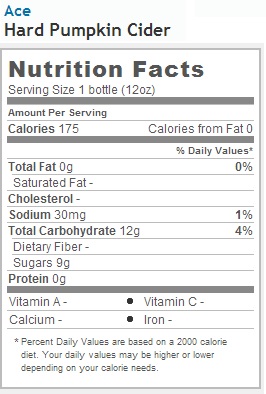
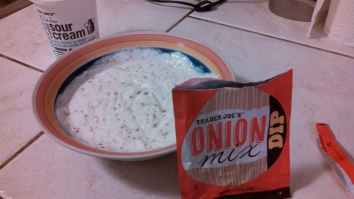
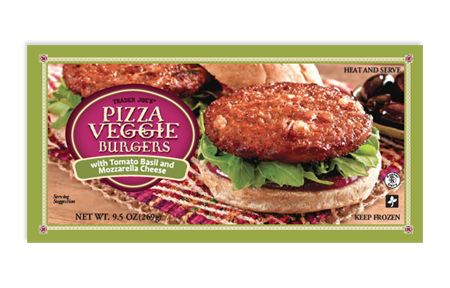
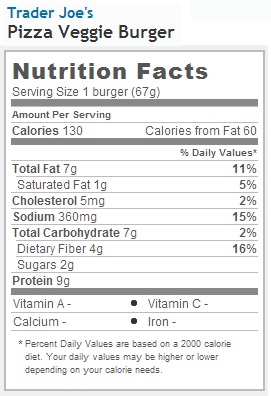
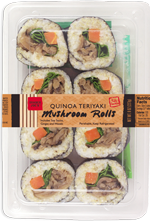
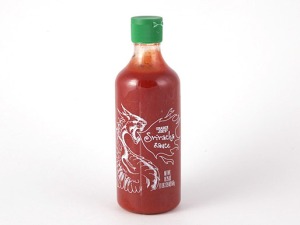


Recent Comments